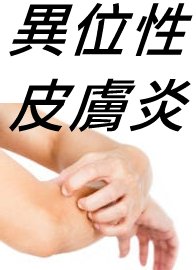| common name | Perilla Leaf |
| alias | Zisuye |
This product is the stem and leaves of the annual herbaceous plant Perilla Leaf (Perilla frutescens (L.) Britt.) from the Lamiaceae family. The leaves are referred to as Perilla Leaf, and the stem is known as perilla stem. It is produced in both the northern and southern regions of the mainland. Harvesting takes place in summer and autumn. It is dried in the shade and used raw.
bubble_chart Properties and Meridians
Acrid, warm. Act on lung and spleen meridians.
Inducing sweating to release the exterior, moving qi to soothe the middle.
- Used for wind-cold common cold, cough with excessive phlegm. This product induces sweating to release the exterior, ventilates the lung, and relieves cough. It is often used with Notopterygium, Saposhnikovia Root, etc., such as in Qiang Su Da Biao Tang. If accompanied by panting cough, it is often used with Peucedanum, Bitter Apricot Seed, etc., such as in Apricot Kernel and Perilla Powder; if accompanied by qi stagnation and chest tightness, it is often combined with Cyperus, Dried Tangerine Peel, etc., such as in Xiang Su San.
- Used for spleen and stomach qi stagnation, chest tightness, and vomiting. This product is a good medicine for awakening the spleen, soothing the middle, moving qi, and stopping vomiting, and it also has the function of regulating qi to calm the fetus. For example, to treat external contraction of wind-cold, internal damage by damp stagnation, poor qi movement, chest tightness, vomiting, cold and heat, and headache, it is often used with Patchouli, Dried Tangerine Peel, Pinellia, etc., such as in Patchouli Qi-Righting Powder; if fetal qi disease rises adversely, causing chest tightness, vomiting, and threatened abortion, it is often used with Villous Amomum Fruit, Dried Tangerine Peel, etc., to regulate qi and calm the fetus. It is used to treat globus hystericus caused by seven emotions depression, phlegm coagulation, and qi stagnation, often used with Pinellia, Magnolia Bark.
- In addition, it can also be used for fish and crab poisoning, abdominal pain, vomiting, and diarrhea. It can be used alone by decocting and taking the soup, or combined with Fresh Ginger Rhizome, Dried Tangerine Peel, Patchouli, etc.
- Bielu: "The lord lowers qi, eliminates cold in the middle."
- Diannan Bencao: "Induces sweating, relieves common cold headache, disperses phlegm, calms wheezing and asthma."
Decoct for oral use, 3-10g, not suitable for prolonged decoction.
bubble_chart Modern Pharmacology
This product contains volatile oils, primarily consisting of Perilla Leaf aldehyde, L-limonene, and a small amount of alpha-pinene. The decoction of cultivated purple perilla leaf has a mild antipyretic effect, promotes the secretion of digestive juices, enhances gastrointestinal motility, reduces bronchial secretions, and alleviates bronchial spasms. The water decoction of this product has inhibitory effects on large intestine bacilli, dysentery bacilli, and staphylococci.
bubble_chart Supplementary Medicinals
Perilla stem: The stem of Perilla Leaf. It has a pungent and sweet taste, and is slightly warm in nature. It belongs to the lung, spleen, and stomach meridians. Its functions include soothing the chest and disinhibiting the diaphragm, regulating qi, and calming the fetus. It is suitable for symptoms such as qi stagnation in the chest and abdomen, stuffiness and distension, threatened abortion, and distending pain in the chest and hypochondrium.
Perilla fruit: The dried mature fruit of Perilla Leaf. It has a pungent taste and is warm in nature. It belongs to the lung meridian. Its functions include descending qi, dispersing phlegm, relieving asthma, and moistening the intestines. It is used for phlegm congestion with counterflow qi, cough and panting, and intestinal dryness with constipation. The usual dosage is 3-9g.
bubble_chart Other Related Items






